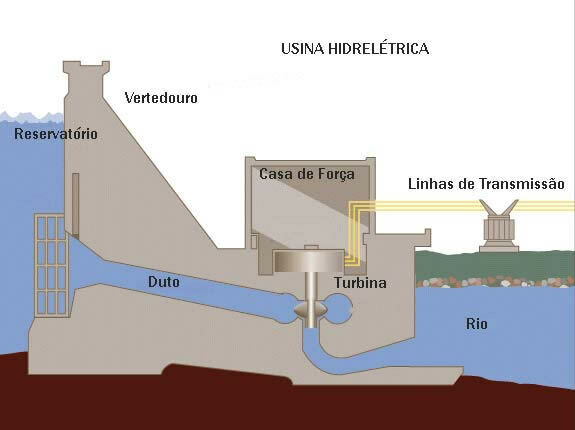The presence of electrical energy in our lives is gigantic. Refrigerator, blender, television, iron... and others are devices that work using this form of energy.
The electrical energy that reaches us is generated in hydroelectric plants; so says the usual language, since in fact it is the result of a process of converting potential energy into electrical energy.
The water that is dammed stores potential energy, when opening the plant's jams, the potential energy of water is converted into kinetic energy as it flows through the ducts. Upon coming into contact with the turbines, they begin to rotate, giving rise to the induced electromotive force, a process that consists of energy conversion kinetics of the turbines in electrical energy, because due to the emf (electromotive force) an electrical current will be established between two points (example: power plant-residence). See figure 1.

Figure 1
Simple project of a hydroelectric plant
We see then that the energy that reaches us is not the result of a process of generation but of conversion.
By Frederico Borges de Almeida
Graduated in Physics
Source: Brazil School - https://brasilescola.uol.com.br/fisica/o-principio-funcionamento-uma-usina-hidreletrica.htm



